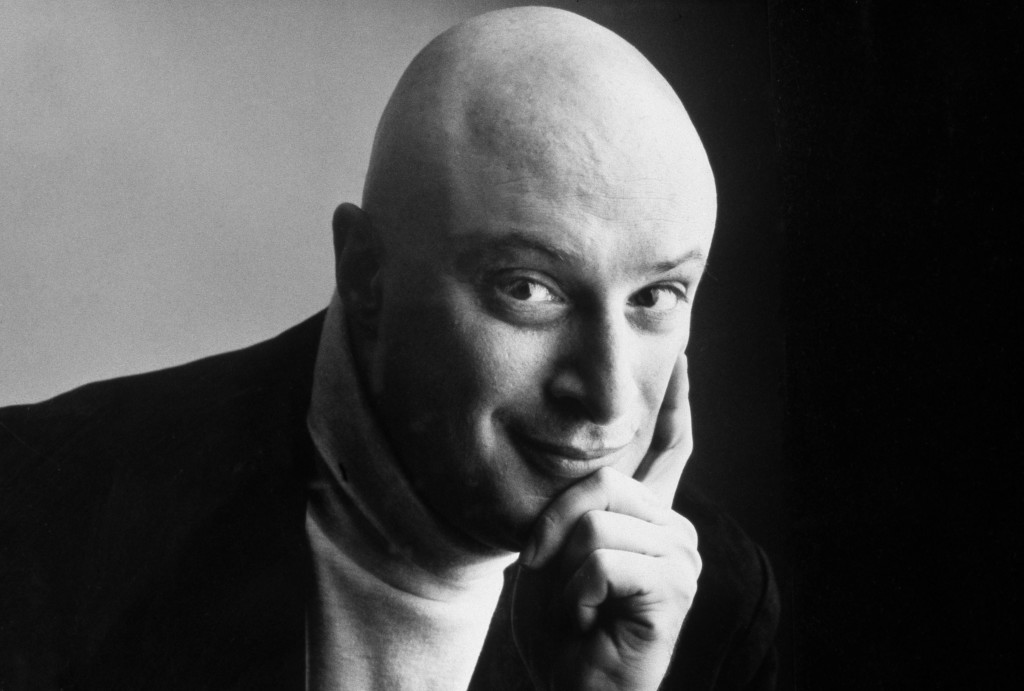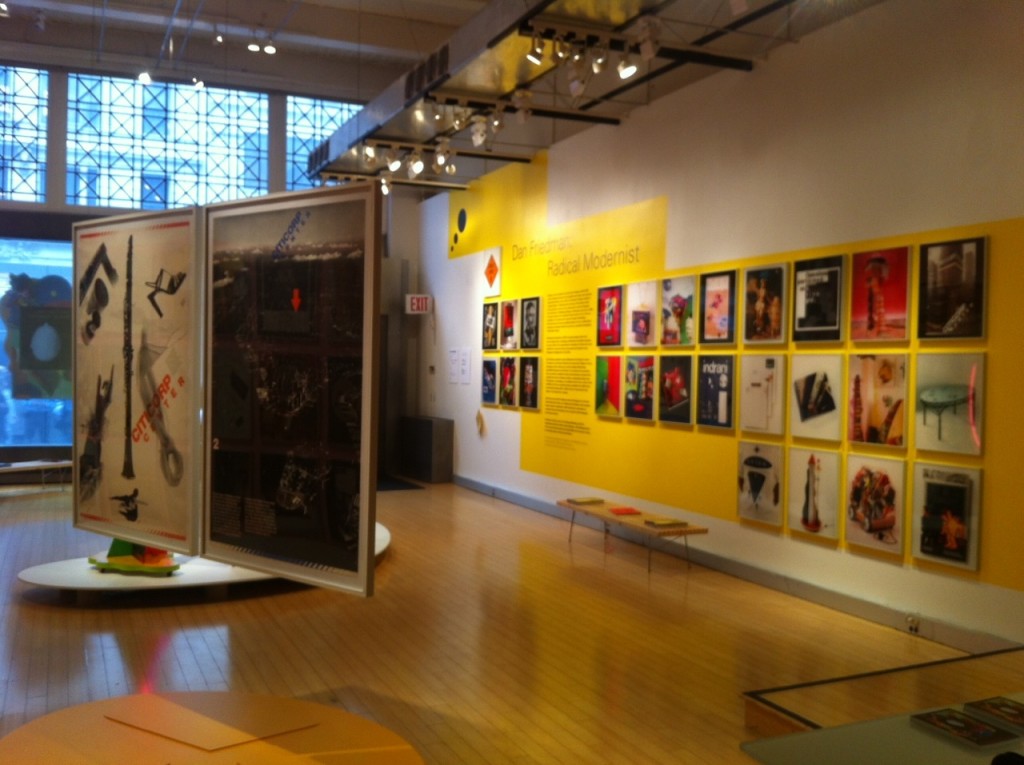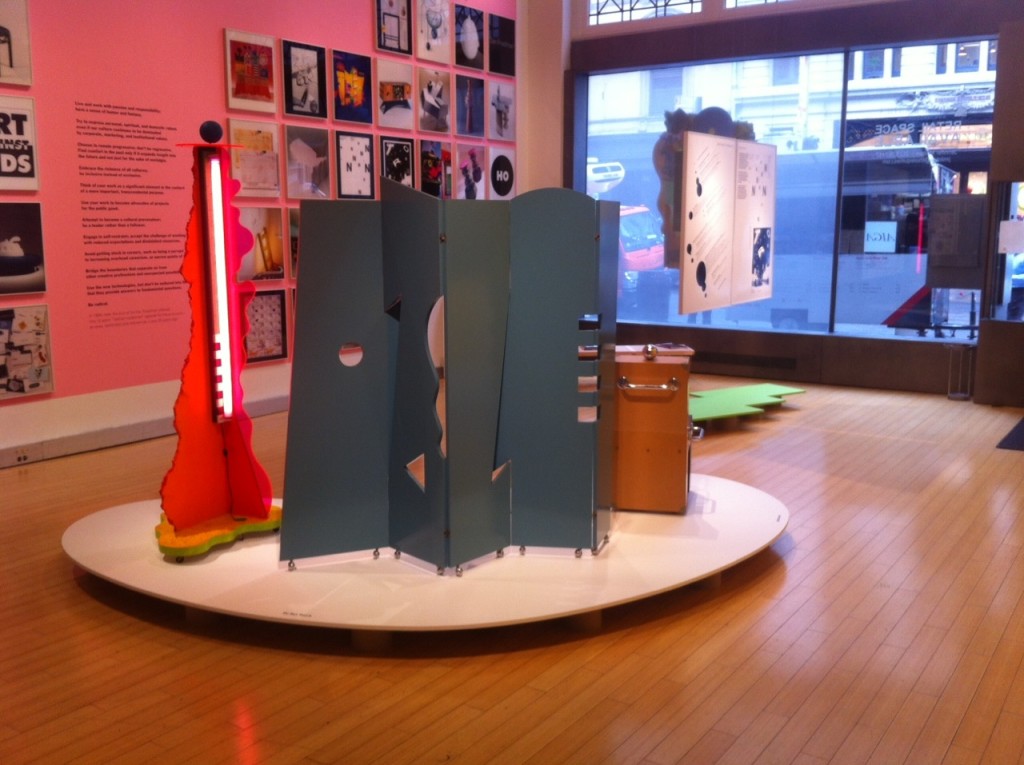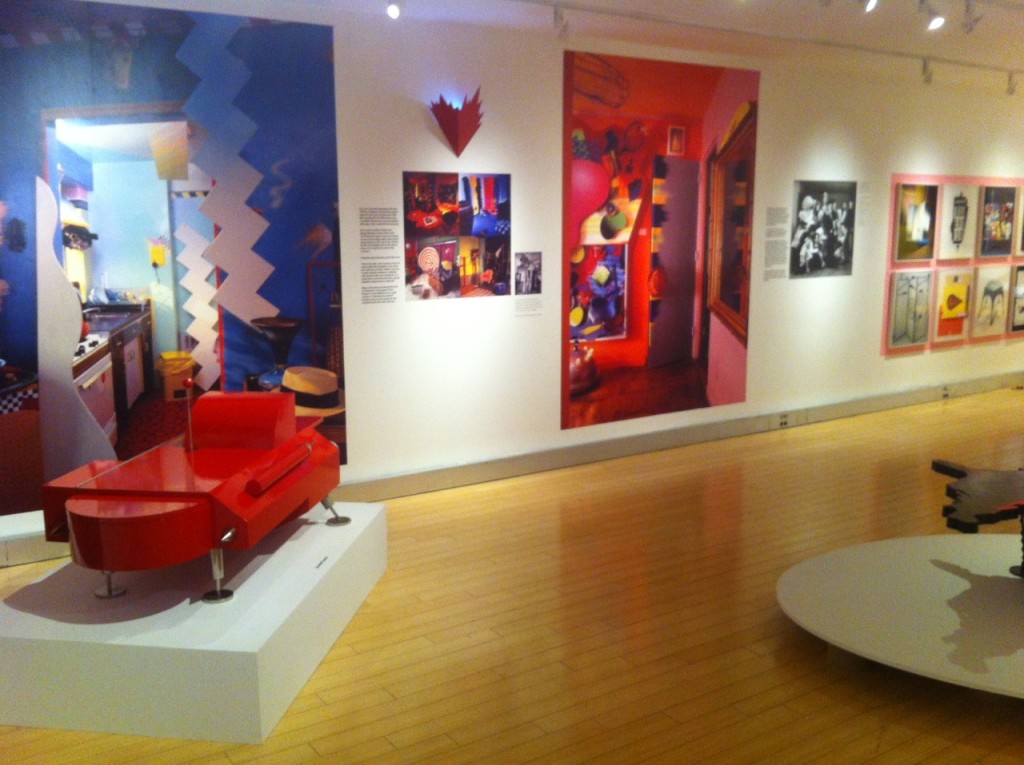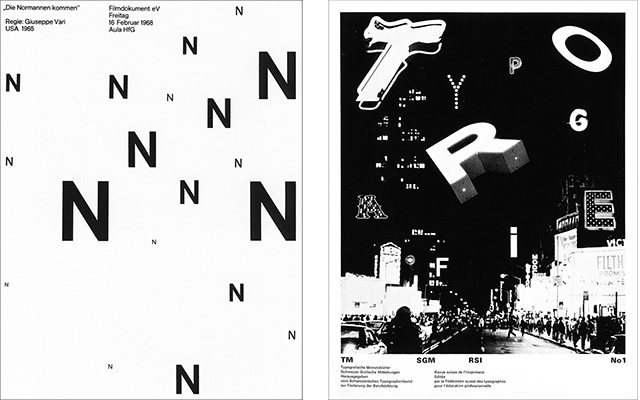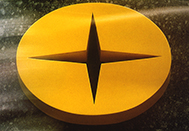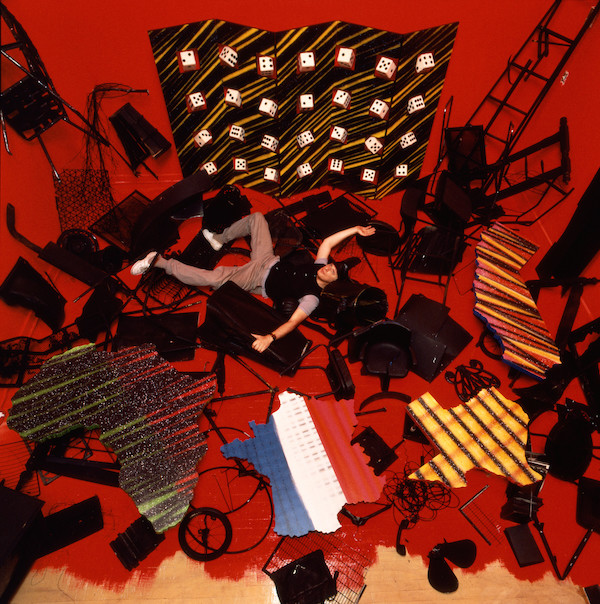Dan Friedman: Radical Modernist
|
I was helped in this project by Dan’s brother Ken Friedman, and my former colleague from WGBH, Laura Varacchi, now a partner in LVCK Environmental Graphics in Brooklyn. Aidan O’Connor was the project manager, editor, proof-reader and all-round at AIGA. Here is a peek at the installation. Dan moved seamlessly between the disciplines that made up his dynamic, though abbreviated, career. After Carnegie Mellon, he absorbed the dual influences of high modernist discipline at Ulm and a more intuitive, exuberant mode of thinking at Basel, where he was mentored by Armin Hofmann and Wolfgang Weingart. Ulm influence 1967 Basle influence 1971He began teaching at Yale in 1969 where he developed a rigorous but expansive design pedagogy that shifted away from the prevailing influence of cool, rational Swiss modernism and helped define the expressive, postmodern foundations of New Wave design. Leaving academia in 1975 he created the elegant new Citibank identity at Ansbach Grossman Portugal before joining Pentagram, where he worked from 1979-82. But Dan became gradually disillusioned with designing in service to business and plunged into the flamboyant and eccentric New York hip-hop art scene of the early 80’s. He poured his creativity into works of fantasy furniture, experimental objects, “post-nuclear” assemblages (below), abstract sculpture and screens, which were exhibited in New York, Paris and Milan. As AIDS engulfed the creative community, he devoted his design skills to AIDS activism, living himself in the shadow of the disease for a decade. Dan’s entire career was guided by a consistent methodology and unifying philosophy. Near the end of his life, Friedman wrote Dan Friedman: Radical Modernism, in which he rejected the hollow notion of modernism as corporate style. Instead he reaffirmed the original idealistic tenets of modernism, while advocating a more expressive formal language and humane purpose. His eclectic career and unifying philosophy provide an inspirational model for today’s designers, challenging them to improve society by embracing culture, diversity and fantasy. I highly recommend his book. It is still available on Amazon and from online used book dealers. It is fascinating reading and beautifully put together. At the end of his book Dan offered this “radical modernist” agenda:
Live and work with passion and responsibility; have a sense of humor and fantasy. Try to express personal, spiritual, and domestic values even if our culture continues to de dominated by corporate, marketing, and institutional values. Choose to remain progressive; don’t be regressive. Find comfort in the past only if it expands insight into the future and not just for the sake of nostalgia. Embrace the richness of all cultures; be inclusive instead of exclusive. Think of your work as a significant element in the context of a more important, transcendental purpose. Use you work to become advocates of projects for the public good. Attempt to become a cultural provocateur; be a leader rather than a follower. Engage in self-restraint; accept the challenge of working with reduced expectations and diminished resources. Avoid getting stuck in corners, such as being a servant to increasing overhead careerism, or narrow points of view. Bridge the boundaries that separate us from other creative professions and unexpected possibilities. Use the new technologies, but don’t be seduced into thinking that they provide answers to fundamental questions. Be radical. |
